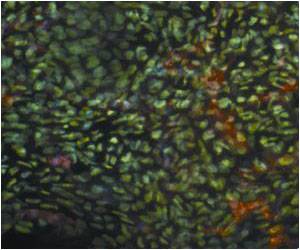
‘For the authenticity of the research results, it is imperative to conduct DNA profiling of the cell lines used, to establish its identity and to show that their genetic profile match with the tissue of the origin.’
Tweet it Now
Researchers studying the brain tumor type glioma often use a cell line called U87MG that was established at Uppsala University almost fifty years ago. It is presently publicly available from the American Type Culture Collection (ATCC), where researchers can order it to use it in their studies. Bengt Westermark is senior professor at the Department of Immunology, Genetics and Pathology, which is the present name for the department where U87MG was established. His research group has often used the original U87MG line and their experience led them to question the authenticity of the ATCC cell line.Marie Allen, an expert in DNA fingerprinting, works at the same department. DNA fingerprinting is an important tool for determining genetic identity, for instance in crime scene investigations.
'Marie and her colleagues helped us genetically compare the cell lines with each other. We found that the U87MG cell line from ATCC had a different DNA profile than the original cell line in Uppsala', says Bengt Westermark.
When the cell line was established in the 1960s, material from the original tumor was saved as thin sections on microscope slides. Using a very sensitive DNA analysis technique that can also be employed when only very small amounts of DNA from old tissue are available, the researchers could compare the two current cell lines with the tumor from which the cell line was established.
'The comparison showed that the Uppsala cell line was genetically identical with the original tumor whereas the U87MG cell line from ATCC had a different, unknown origin. We don't know at which point during the fifty years of culturing the mix-up occurred but we have been able to show that the ATCC U87MG line is most likely from a human glioma tumor”, says Bengt Westermark.
Advertisement
Source-Medindia














